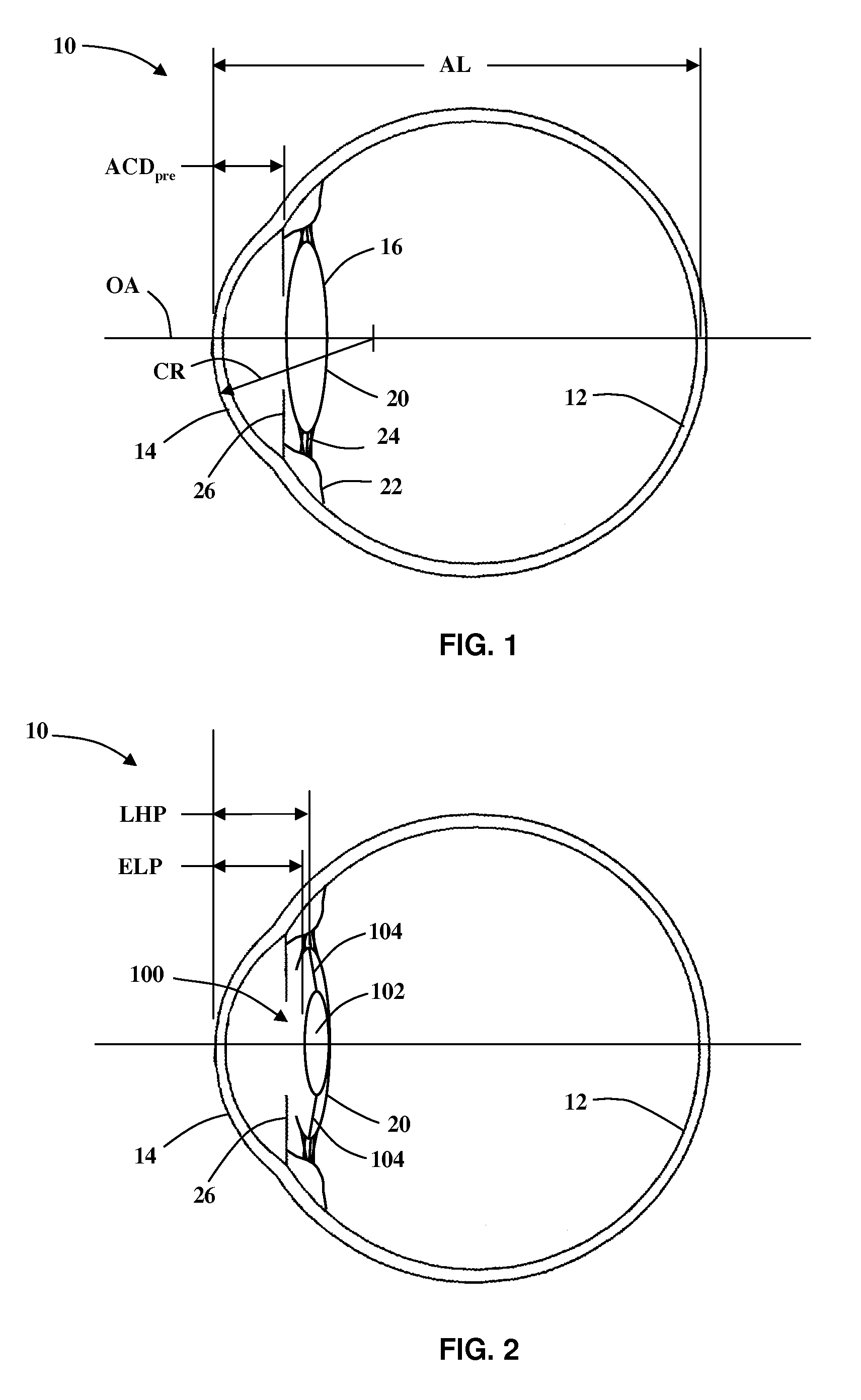Systems and methods for determining intraocular lens power
a technology of intraocular lens and power calculation, which is applied in the field of system and method for determining intraocular lens power, can solve the problems of oversimplification of thin-lens theory, unfavorable refractive outcomes due to improper intraocular lens power calculation, and still relatively common,
- Summary
- Abstract
- Description
- Claims
- Application Information
AI Technical Summary
Benefits of technology
Problems solved by technology
Method used
Image
Examples
Embodiment Construction
[0050]Various formulas exist in the art for calculating intraocular lens power for an individual subject or patient. In general, these formulations include equations for estimating ELP. Many of these formulas are based on thin-lens theory, in which each lens is reduced to a power at its principal plane. The position of the principal plane may depend on the shape factor of the lens or on the vergence of the incoming light, hence ELP is not generally indicative of the true position of the intraocular lens. The formulas differ from each other in the algorithms for estimation of ELP. These algorithms were obtained by analysis of large amounts of clinical data and adjusted such that the calculated refracted outcome on average agreed with that found postoperatively.
[0051]To compensate for deviations in unusually long or unusually short eyes, many formulas also include certain “fudge” factors. For example, the Holladay 1, SRK / T, Hoffer Q formulas include a SF-, A- and ACD-constant, respect...
PUM
 Login to View More
Login to View More Abstract
Description
Claims
Application Information
 Login to View More
Login to View More - R&D
- Intellectual Property
- Life Sciences
- Materials
- Tech Scout
- Unparalleled Data Quality
- Higher Quality Content
- 60% Fewer Hallucinations
Browse by: Latest US Patents, China's latest patents, Technical Efficacy Thesaurus, Application Domain, Technology Topic, Popular Technical Reports.
© 2025 PatSnap. All rights reserved.Legal|Privacy policy|Modern Slavery Act Transparency Statement|Sitemap|About US| Contact US: help@patsnap.com



